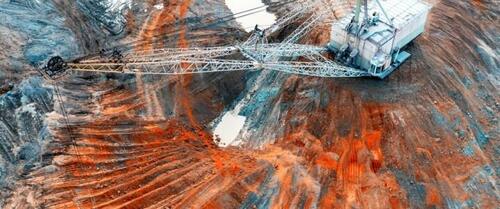The World Is Racing To Break China’s Rare Earth Dominance
As demand for battery metals rise, the world is pushing to break its dependence on China for raw materials used to make rare earth magnets.
China managed to develop a powerful monopoly on the global rare earths market.
Aside from the US, countries like Japan, South Korea, Italy, and the Netherlands heavily rely on Chinese rare earth imports.
The November Rare Earth MMI (Monthly MetalMiner Index) broke its short-term downward trend and traded sideways month-over-month. Altogether, the index dropped a modest 0.97%. Rare earths managed to hold their steady trend over most of 2022. This was due to the high demand for EV’s, electronics, and rare earth magnets. Indeed, the global market for all of these products continues to grow rapidly.
Another factor playing into the slight upward trend was pinched global supplies. With fewer exports coming out of China, many countries are searching for alternative sources. For years, China managed to dominate the global supply of materials for rare earth magnets. Now, some want to break their dependence on Chinese rare earths completely.
World Seeks to Break Dependency on Chinese Rare Earths
For the past couple of months, MetalMiner frequently posted about the world’s dependence on China for raw materials used to make rare earth magnets. Aside from the US, countries like Japan, South Korea, Italy, and the Netherlands heavily rely on Chinese rare earth imports.
It’s clear why. China boasts extensive rare earth reserves. As the world increases its demand for such products, China managed to develope a powerful monopoly on the global market. So, to prevent China from wielding too much geopolitical power in rare earth trading, it’s becoming crucial to find alternative sources.
It’s true that most of the world’s rare earth processing takes place in China. However, many raw rare earth materials are actually extracted from other parts of the globe. Common sources include Myanmar (Burma), the US, Canada, and Australia. And with demand for rare earth magnets expected to double by 2030, tapping into these supplies has become more important than ever.
Other Countries Catching up With Chinese Rare Earth Production
Fortunately, many nations continue to ramp up their own rare earth production. In Japan, miners have gone to impressive lengths to compete against China in the global rare earth magnet marketplace. In fact, researchers recently explored beneath the Pacific Ocean (right outside of the Ogasawara islands) at a depth of 6,000 meters to excavate materials for rare earth magnets. The Japanese government plans to start excavating these raw rare earth materials as early as April of 2023.
Japan isn’t alone. Australia, another nation abundant in raw materials for rare earth magnets, continues to step up its rare earth mining game. Arafura, a mining project located in Central Australia, recently announced plans to increase investments in its mining endeavors. Many of these take place in the hottest, most sun-parched areas of the nation. But according to Arafura it’s worth it. Apparently, the company sees a huge opportunity due to the large amounts of neodymium and praseodymium located in the region. These elements are frequently used in producing rare earth magnets. Currently, the company claims their mines could satisfy up to 5% of the world’s demand.
Tyler Durden
Mon, 11/07/2022 – 05:00

